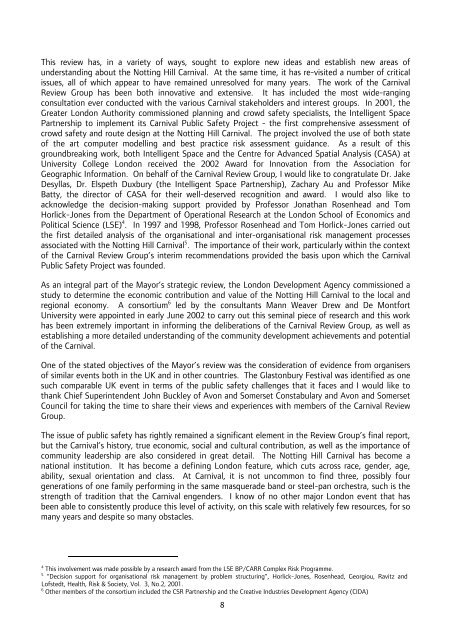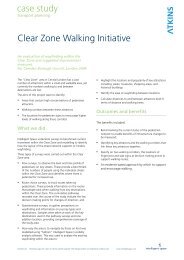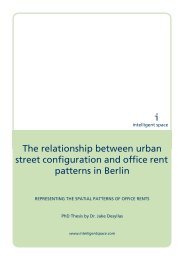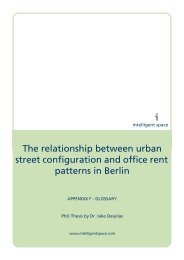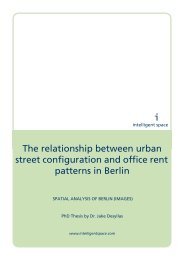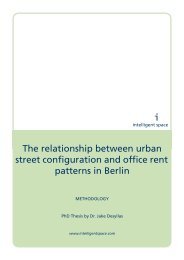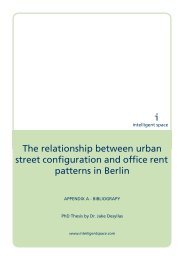Notting Hill Carnival Strategic Review - Intelligent Space
Notting Hill Carnival Strategic Review - Intelligent Space
Notting Hill Carnival Strategic Review - Intelligent Space
Create successful ePaper yourself
Turn your PDF publications into a flip-book with our unique Google optimized e-Paper software.
This review has, in a variety of ways, sought to explore new ideas and establish new areas of<br />
understanding about the <strong>Notting</strong> <strong>Hill</strong> <strong>Carnival</strong>. At the same time, it has re-visited a number of critical<br />
issues, all of which appear to have remained unresolved for many years. The work of the <strong>Carnival</strong><br />
<strong>Review</strong> Group has been both innovative and extensive. It has included the most wide-ranging<br />
consultation ever conducted with the various <strong>Carnival</strong> stakeholders and interest groups. In 2001, the<br />
Greater London Authority commissioned planning and crowd safety specialists, the <strong>Intelligent</strong> <strong>Space</strong><br />
Partnership to implement its <strong>Carnival</strong> Public Safety Project - the first comprehensive assessment of<br />
crowd safety and route design at the <strong>Notting</strong> <strong>Hill</strong> <strong>Carnival</strong>. The project involved the use of both state<br />
of the art computer modelling and best practice risk assessment guidance. As a result of this<br />
groundbreaking work, both <strong>Intelligent</strong> <strong>Space</strong> and the Centre for Advanced Spatial Analysis (CASA) at<br />
University College London received the 2002 Award for Innovation from the Association for<br />
Geographic Information. On behalf of the <strong>Carnival</strong> <strong>Review</strong> Group, I would like to congratulate Dr. Jake<br />
Desyllas, Dr. Elspeth Duxbury (the <strong>Intelligent</strong> <strong>Space</strong> Partnership), Zachary Au and Professor Mike<br />
Batty, the director of CASA for their well-deserved recognition and award. I would also like to<br />
acknowledge the decision-making support provided by Professor Jonathan Rosenhead and Tom<br />
Horlick-Jones from the Department of Operational Research at the London School of Economics and<br />
Political Science (LSE) 4 . In 1997 and 1998, Professor Rosenhead and Tom Horlick-Jones carried out<br />
the first detailed analysis of the organisational and inter-organisational risk management processes<br />
associated with the <strong>Notting</strong> <strong>Hill</strong> <strong>Carnival</strong> 5 . The importance of their work, particularly within the context<br />
of the <strong>Carnival</strong> <strong>Review</strong> Group’s interim recommendations provided the basis upon which the <strong>Carnival</strong><br />
Public Safety Project was founded.<br />
As an integral part of the Mayor’s strategic review, the London Development Agency commissioned a<br />
study to determine the economic contribution and value of the <strong>Notting</strong> <strong>Hill</strong> <strong>Carnival</strong> to the local and<br />
regional economy. A consortium 6 led by the consultants Mann Weaver Drew and De Montfort<br />
University were appointed in early June 2002 to carry out this seminal piece of research and this work<br />
has been extremely important in informing the deliberations of the <strong>Carnival</strong> <strong>Review</strong> Group, as well as<br />
establishing a more detailed understanding of the community development achievements and potential<br />
of the <strong>Carnival</strong>.<br />
One of the stated objectives of the Mayor’s review was the consideration of evidence from organisers<br />
of similar events both in the UK and in other countries. The Glastonbury Festival was identified as one<br />
such comparable UK event in terms of the public safety challenges that it faces and I would like to<br />
thank Chief Superintendent John Buckley of Avon and Somerset Constabulary and Avon and Somerset<br />
Council for taking the time to share their views and experiences with members of the <strong>Carnival</strong> <strong>Review</strong><br />
Group.<br />
The issue of public safety has rightly remained a significant element in the <strong>Review</strong> Group’s final report,<br />
but the <strong>Carnival</strong>’s history, true economic, social and cultural contribution, as well as the importance of<br />
community leadership are also considered in great detail. The <strong>Notting</strong> <strong>Hill</strong> <strong>Carnival</strong> has become a<br />
national institution. It has become a defining London feature, which cuts across race, gender, age,<br />
ability, sexual orientation and class. At <strong>Carnival</strong>, it is not uncommon to find three, possibly four<br />
generations of one family performing in the same masquerade band or steel-pan orchestra, such is the<br />
strength of tradition that the <strong>Carnival</strong> engenders. I know of no other major London event that has<br />
been able to consistently produce this level of activity, on this scale with relatively few resources, for so<br />
many years and despite so many obstacles.<br />
4<br />
This involvement was made possible by a research award from the LSE BP/CARR Complex Risk Programme.<br />
5<br />
“Decision support for organisational risk management by problem structuring”, Horlick-Jones, Rosenhead, Georgiou, Ravitz and<br />
Lofstedt, Health, Risk & Society, Vol. 3, No.2, 2001.<br />
6<br />
Other members of the consortium included the CSR Partnership and the Creative Industries Development Agency (CIDA)<br />
8


